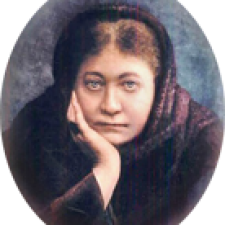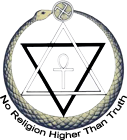Albigensians (or Cathars)
BNet Newsletter
by Reed Carson
October, 2006
Dear Member of Blavatsky Net,
In researching the Gnostics I was surprised to learn that the Albigensians were also considered to be an outcropping of that same philosophy. So I have been exploring the Albigensians for a while now. It has turned out that determining their belief system has been elusive. The reason is that the Catholic church attempted to destroy all records of their existence and the church generally succeeded in doing so.
However, even in the absence of records their story ought to be told and known. So here are some details.
The Albigensians lived in what is now southern France, and south into the mountains of the Pyrenees. They flourished in the 12th century and were exterminated (not an unfair word) over some 40 years in the 13th century. They lived in the general area of Languedoc, so named from Langue d’ oc since the language they spoke was Occitan.
The name Albigensian derives from the town “Albi” that was one of their early centers. Sympathetic outsiders to the religion called the Albigensians “Cathars”. Cathar translates as “pure” or “the pure one” and that indeed is the impression they left upon others. Since this newsletter is sympathetic, I’ll call them Cathars. (Yes, the term is related to “catharsis” which comes from Greek meaning “to purify, purge”.)
The origins of the Cathars are not totally clear.
Here is the remarkably short single sentence from Massacre at Montsegur:
The religion of the Cathars, or the “pure ones”, came from the East.
Admittedly, the author elaborates with some helpfulness but still uncertain explanation of their origins.
Their contemporaries labelled the Cathars as Manichaeans or Arians: indeed, the majority of heretical sects that appeared in Western Europe from the eleventh century onwards were given the common title of ‘Manichaean’. This was merely a figure of speech: the heretics themselves never claimed any connection with Mani, and it is clear that the various Churches with avowed Manichaean tendencies (e.g. those established in Spain, North Africa, and even in France) had for long now renounced so alarming an affiliation, with the anathemas and bonfires that it brought in its wake. There was no longer such a being as a ‘Manichaean’; by now there were only ‘Christians’. ( Massacre at Montsegur , Zoe Oldenbourg p 29)
Blavatsky offers a slightly longer view:
Having thus traced the evolution of Buddhist thought from India to Palestine and Europe, É. Burnouf points out that the Albigenses on the one hand, and the Pauline school (whose influence is traceable in Protestantism) on the other, are the two latest survivals of this influence. (The Theosophical Society: Its Mission and its Future, Blavatsky)
One of the details we know of their teachings is that they believed in reincarnation:
Unredeemed souls are reborn time and again in bodies of flesh, until they take advantage of the liberating message and mysteries of the savior. (Gnosticism by Stephan Hoeller p 146.)
Zoe Oldenbourg has written an entire scholarly book on the Cathars under name “Massacre at Montsegur”. (Montsegur is the name of the castle in the Pyrenees where the Cathars held their last stand.) Oldenbourg writes:
In this respect, too, the various Cathar sects show certain discrepancies between one another. Some of them claimed that the total number of these ‘lost souls’ was limited, and that they merely migrated from one body to another, in a continual sequence of births and deaths – a view very much akin to the Hindu doctrine of metempsychosis and karma. (Massacre at Montsegur by Zoe Oldenbourg p 35.)
Of course this same detailed issue arose on the talk list. Theosophy holds that in any one great period of time the total number of souls is limited. Oldenbourg adds:
Be that as it may, the Cathars, generally speaking, acknowledged the doctrine of metempsychosis as held by the Hindus, with the same precise calculations governing posthumous retribution for the individual. A man who had led a just life would be reincarnated in a body better suited for his further spiritual development; whereas the criminal was liable, after his death, to be reborn in a body full of flaws and hereditary vices – or even, in extreme cases, in that of an animal. (Massacre at Montsegur by Zoe Oldenbourg p 35.)
Theosophy says to the contrary that humans never reincarnate as animals. We have reached a stage where we are too complicated to properly work out karmic relations in a simple animal form. As usual, Sylvia Cranston has discovered the gems on this subject.
In his book :The Cathars and Reincarnation”, Dr. Guirdham points out that it was because of their belief in reincarnation, along with other things, that the Albigenses were “Completely massacred very, very completely”. (Reincarnation The Phoenix Fire Mystery p 164)
Why was the belief in reincarnation so offensive to the Defenders of the Faith? Various reasons may be given but the implicit psychology of reincarnation may be the best explanation. The believer in this teaching tends to hold himself responsible for his own progress and salvation. Such a person has no need of priests and little regard for external dead-letter observance, rite, or conformity. The devices (such as the confessional) of a redemption conferred by institutional authority were to believers in evolution through rebirth transparently fraudulent or false. Hence their persecution over the many centuries while dogmatic religion remain in power. (Reincarnation The Phoenix Fire Mystery p 164)
This newsletter will cover more reasons why the Cathars were offensive to the Catholics but there is one more teaching that is particularly Theosophical. The next quote gives a hint of an “atma” in the teachings of the gnostics. There is a similarity to Theosophy here though to do it full justice requires analyzing more deeply the gnostic myth of Sophia. In simple form:
Cathars regarded the human soul as angelic in nature. They taught that the purely spiritual souls of humans had been stolen by Lucifer and confined by him in human bodies, which are corrupt by nature.. Thus here, as in all Gnostic systems, the human being consists of part spirit and part corrupted substance. Attachment to earthly things, including sexual desire, was considered the result of the contaminated conditions of human life. (Gnosticism by Hoeller p 147)
Sean Byrne offers a related explanation of why Rome was disturbed by the Cathars.
There were other reasons too of course why the Church undertook this, perhaps the most demonic of all its acts of repression so far. For the fact was that the Cathars, though by the very nature of their beliefs and practices did not need a hierarchical or centralist structure to their movement, they were nevertheless by the time of the Crusade coalescing into a clearly defined Mystery-wisdom or esoteric movement within the confines of the Church itself. Though they did not have priests as such, they did have a structure whereby the ‘gradual’ process of initiation actually took place in an ordered way for all their members . Thus if one became a convert one could eventually progress from being an ordinary outer member to an inner one by becoming what they called a parfait. (The Tragic History of Esoteric Christianity p 146)
By the year 1200 the Church indeed had cause to worry. The Cathars were beginning to spread outward into the rest of Europe. They were acting as a Church within a Church. Their blasphemies (based on Gnostic dualism) had become too contrary to the teachings of the church. So the church took action. It initiated what became known as the Albigensian Crusades. This was the first and only crusade, at the order of the pope, that pitted Christians against Christians. The rewards for the participants were remission of all sins, an expiation of penances, an assured place in Heaven, and all the booty one could plunder.
In 1209 an army of some thirty thousand knights and foot soldiers from northern Europe descended like a whirlwind on the Languedoc – the mountainous northeastern foothills of the Pyrenees in what is now southern France. In the ensuing war the whole territory was ravaged, crops were destroyed, town and cities were razed, a whole population was put to the sword. This extermination occurred on so vast, so terrible a scale that it may well constitute the first case of “genocide” in modern European history. In the town of Beziers alone, for example, at least fifteen thousand men, women, and children were slaughtered wholesale – many of them in the sanctuary of the church itself. (Holy Blood, Holy Grail, p 49)
The last stronghold of the Cathars was a dramatic castle perched on a startling high outcropping of rock at Montsegur. In 1243 the siege of Monsegur began. For ten months the seige lasted. The Cathars maintained tenacious resistance and withstood repeated assaults. Finally in March 1244 the Cathars capitulated and Catharism officially ceased to exist. Holy Blood, Holy Grail seems to give the best summary of the following consequences.
But ideas can never be stamped out definitively. In his best-selling book, Montaillou, for example, Emmanuel Le Roy Laurie, drawing extensively on documents of the period, chronicles the activities of surviving Cathars nearly half a century after the fall of Montsegur. Small enclaves of heretics continued to survive in the mountains, living in caves, adhering to their creed, and waging a bitter guerrilla war against their persecutors,. In many areas of the Languedoc – including the environs of Rennes-le-Chateau – the Cathar faith is generally acknowledged to have persisted. And many writers have traced subsequent European heresies to offshoots of Cathar thought – the Wandensians, for instance, the Hussites, the Adamites or Brethren of the Free Spirit, the Anabaptist, and the strange Camisards, numbers of whom found refuge in London during the early eighteenth century. (Holy Blood, Holy Grail p 57)
Closer to today:
Indeed, the whole history of the region is soaked in Cathar blood, and the residues of that blood, along with much bitterness, persist to the present day. Many peasants in the area now, with no inquisitors to fall upon them, openly proclaim Cathar sympathies. There is even a Cathar church and a so-called Cathar pope who, until his death in 1978, lived in the village of Arques. (Holy Blood, Holy Grail p 48).
The most poignant description for me is by Hoeller.
A personal acquaintance of the author, an American expatriate residing in Beziers, once mentioned the name Cathar to one of her local neighbors., The aged countrynman looked at her with a strange expression and said, “Cathars madame? We have always been Cathars, although we don’t talk about it. We also shall always remain Cathars.” It is thus that the long shadow of the God Men and Good Women falls even on our present-day world and life. (Gnosticism by Stephan Hoeller p 154)
Reed Carson
Back to Metaphysics


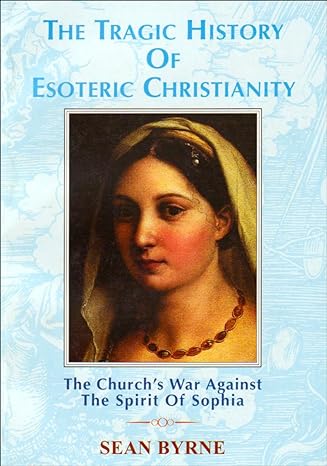
Lorem ipsum dolor sit amet, consectetur adipiscing elit. Ut elit tellus, luctus nec ullamcorper mattis, pulvinar dapibus leo.
Lorem ipsum dolor sit amet, consectetur adipiscing elit. Ut elit tellus, luctus nec ullamcorper mattis, pulvinar dapibus leo.
Lorem ipsum dolor sit amet, consectetur adipiscing elit. Ut elit tellus, luctus nec ullamcorper mattis, pulvinar dapibus leo.
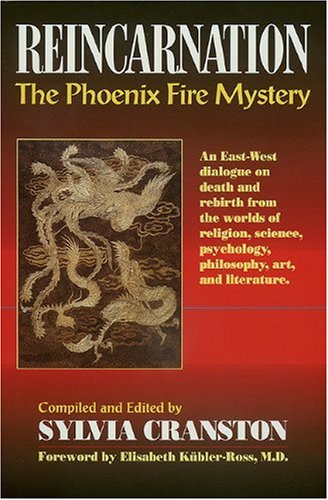

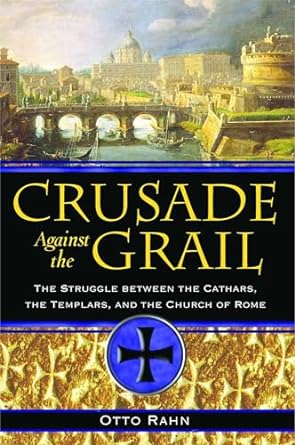
Lorem ipsum dolor sit amet, consectetur adipiscing elit. Ut elit tellus, luctus nec ullamcorper mattis, pulvinar dapibus leo.
Lorem ipsum dolor sit amet, consectetur adipiscing elit. Ut elit tellus, luctus nec ullamcorper mattis, pulvinar dapibus leo.
Lorem ipsum dolor sit amet, consectetur adipiscing elit. Ut elit tellus, luctus nec ullamcorper mattis, pulvinar dapibus leo.
